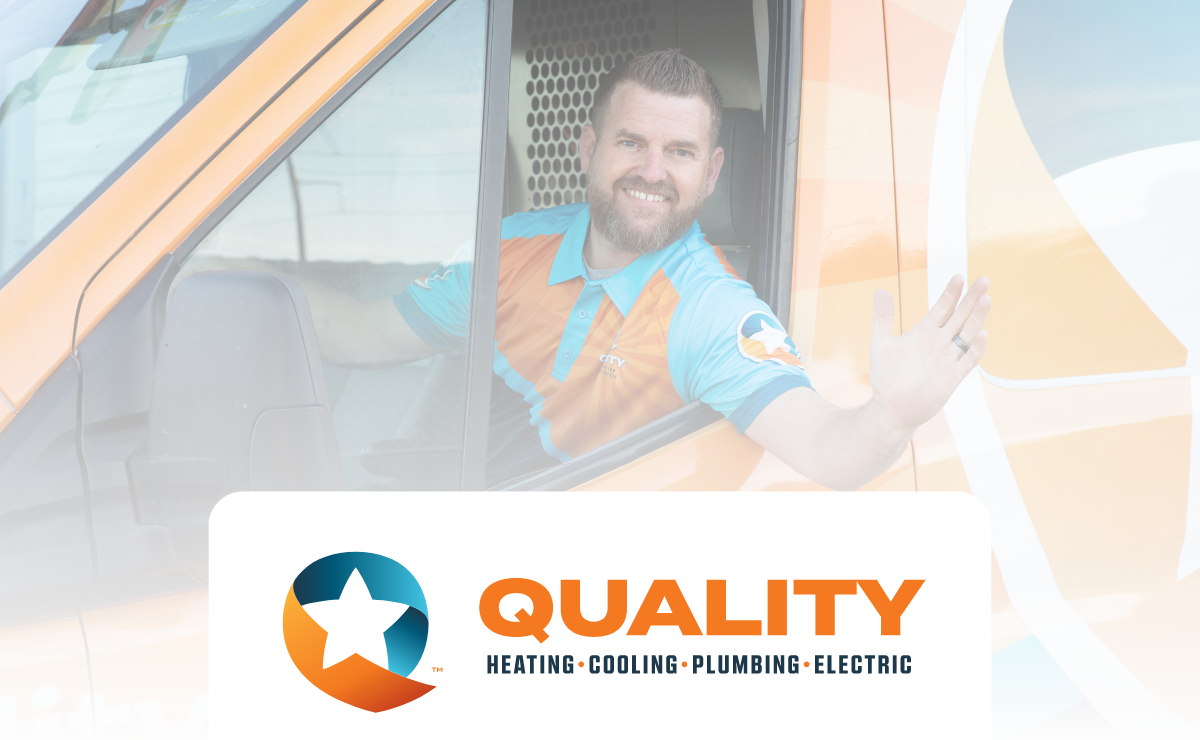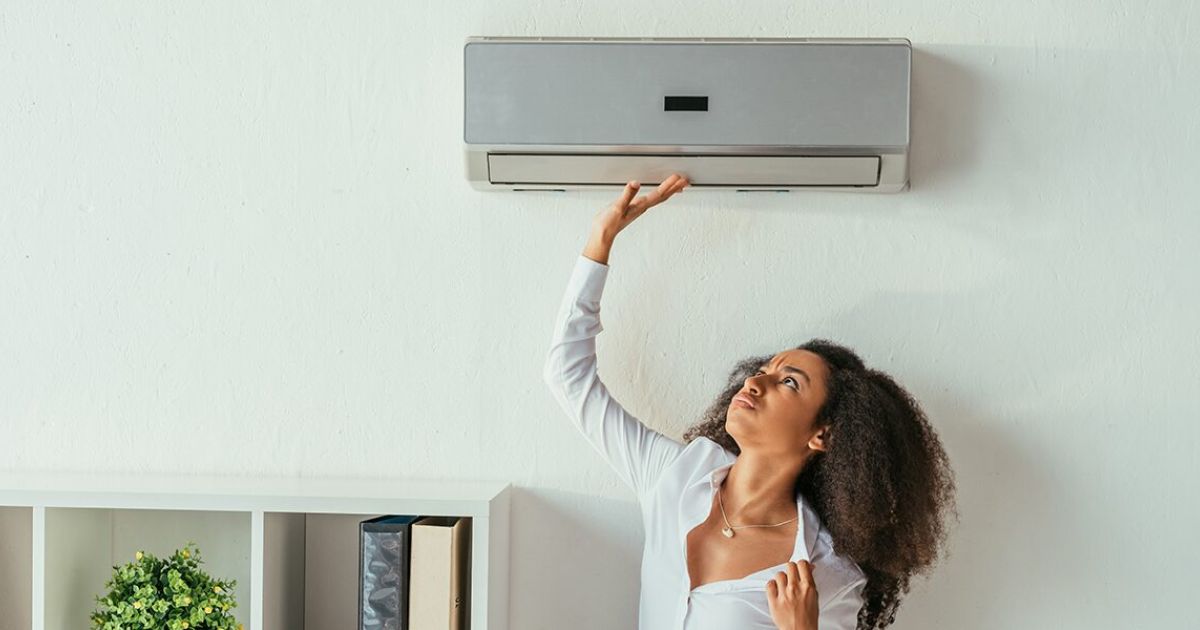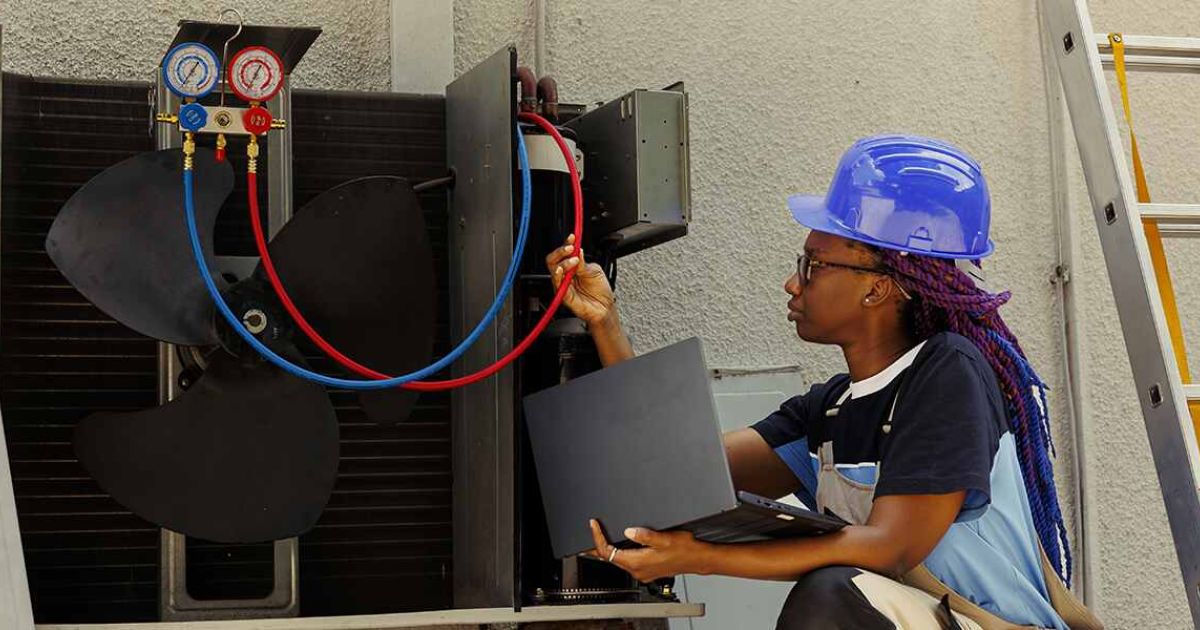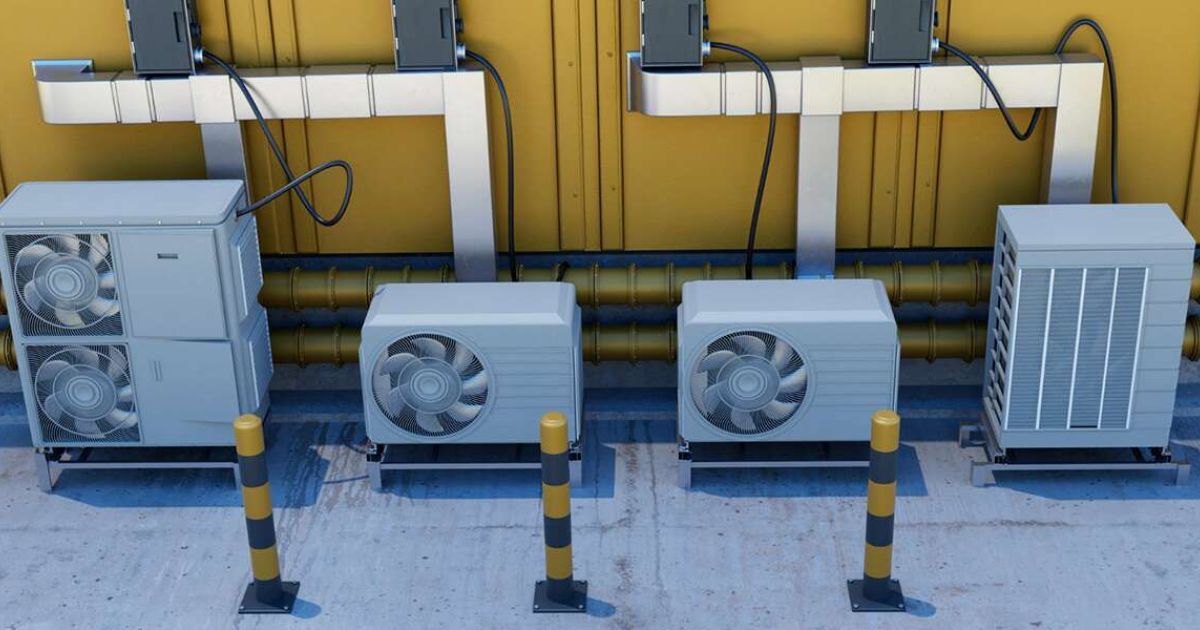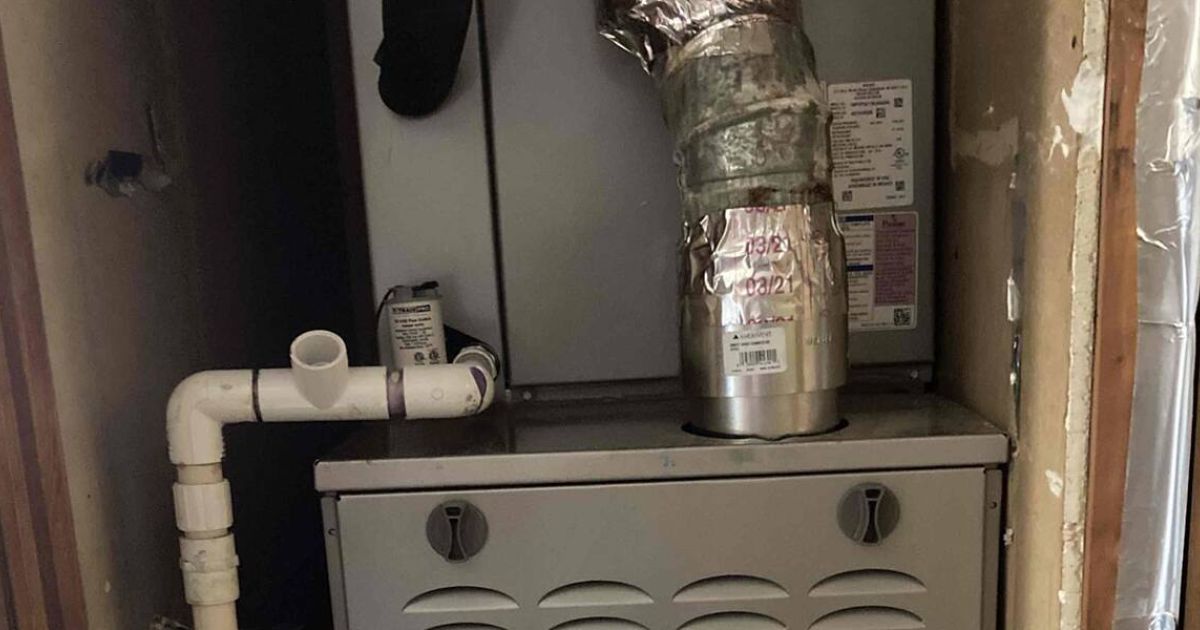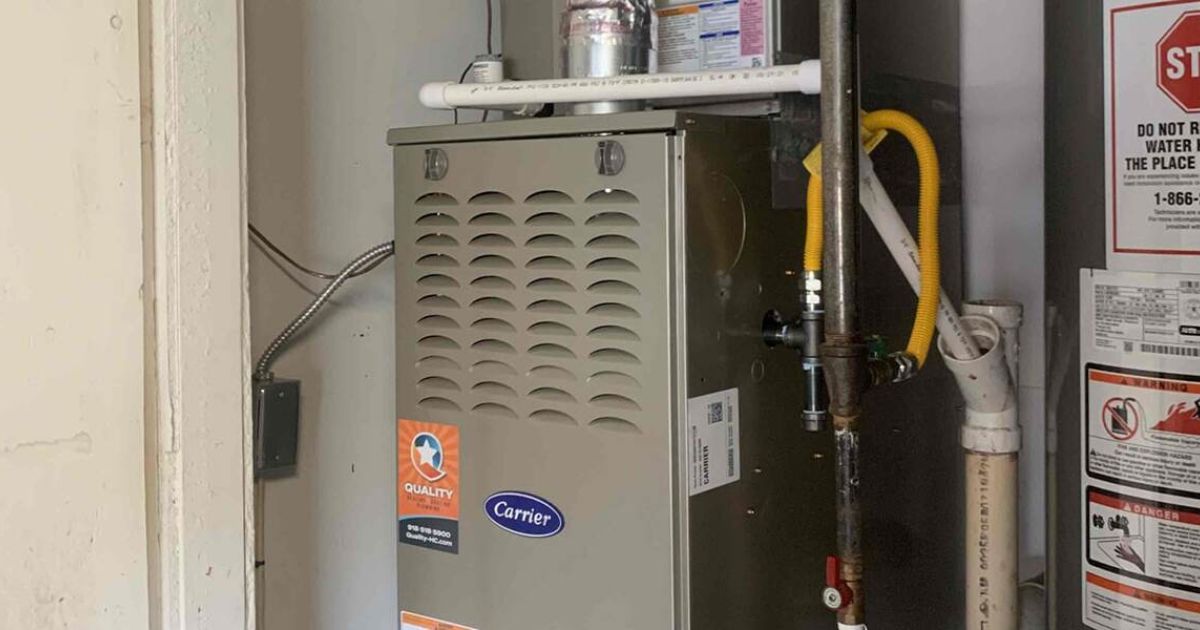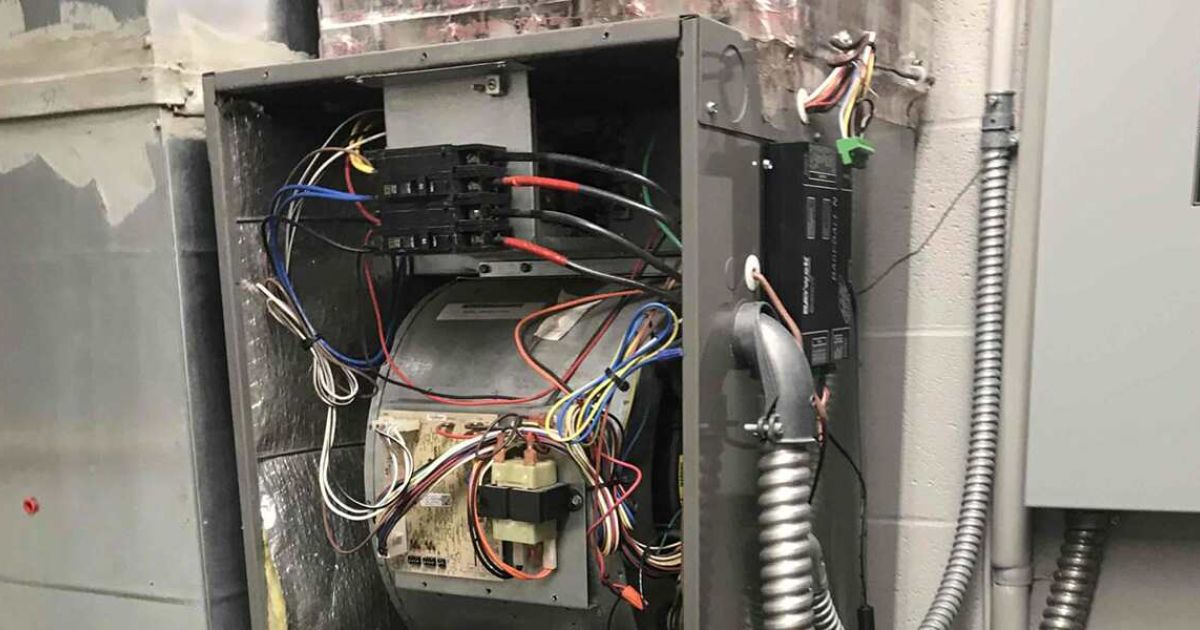Forced-air vs. Central Air HVAC Systems: What Are the Differences?

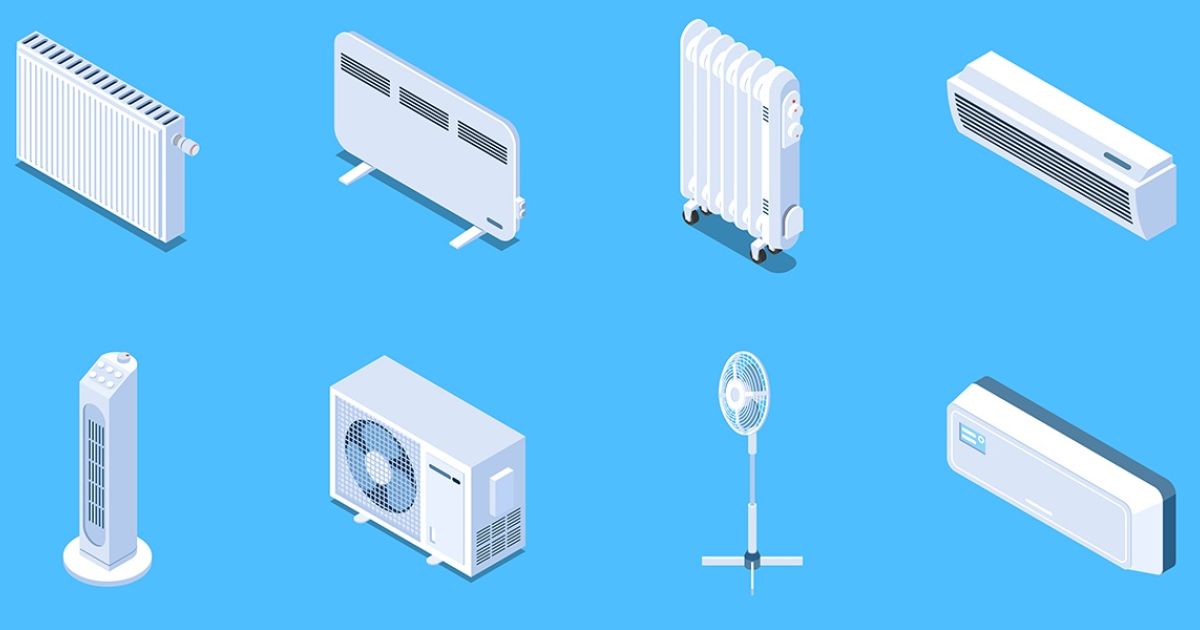
Whether you’re shopping for your first HVAC system or replacing one, knowing the differences between systems can help you make the best choice for your needs. HVAC systems come in forced-air and central air variations. In this blog, we’ll discuss forced air vs. central air and highlight the benefits of each to help you decide which is the right fit for your home.
When it comes to HVAC, there are a lot of technical terms the average person may find confusing. Quality Heating, Cooling, & Plumbing, the most knowledgeable and experienced HVAC installers in Tulsa, OK, want you to have all the information you need when buying a new HVAC system. By hiring us, you can rest easy knowing you made the right choice.
What Is Forced Air, and How Does a Forced-air System Work?
Often, you’ll see industry professionals using the term “forced air” when referring to air heating systems. While this may be a proper use of the term, it’s not quite that simple. Realistically, any HVAC system that sends temperature-regulated air through vents and air ducts into a home is a forced-air system.
HVAC technicians who use this term exclusively for heating are probably thinking about a furnace or heat pump.
How Does a Furnace Work?
Gas, oil, and electric furnaces work pretty much the same way. Furnaces heat houses through the following process:
- Propane, oil, natural gas, or electricity generates heat for the furnace.
- This heat passes through a heat exchanger.
- As the air in the house’s ductwork flows over the heat exchanger, it becomes warm.
- Finally, the blower in the furnace forces air through the ductwork to heat the house.
Most people refer to furnaces as forced-air furnaces because they send heated air throughout the rooms in a house with a blower.
How Does a Heat Pump Work?
The heat pump operates like an air conditioner but differs in that it heats and cools. In warm seasons, it pulls heat out of the house and releases it outside. During the colder months, it takes heat from the outdoor air and sends it into the house.
Heat pumps produce warmth in a house through the following steps:
- The evaporator pulls heat from outside the house and delivers it to a heat exchanger. Different heat pumps will pull heat from the ground, the air, or a nearby water source.
- When heat meets the refrigerant, it causes it to evaporate. The evaporated refrigerant heads to the compressor, where the fluid compression amplifies the heat.
- Once the refrigerant fluid becomes a gas, it travels to the condenser to return to a liquid form. The condenser is a secondary heat exchanger that allows water from the central heating system to absorb the heat.
- The system then distributes the heat throughout the house.
Some heat pumps use heated water to warm a house by sending it through pipes under the floors or into radiators. Other heat pumps use motorized blowers to send hot air into the ductwork.
What Is Central Air Conditioning, and How Does It Work?
A central air system uses a closed circuit of refrigerated air to keep a house cool and comfortable. Most central AC systems consist of outdoor and indoor units working in tandem. Central air cools a home through the following process:
- A vent pulls warm air from inside the home, where it flows over the evaporator coils. The evaporator coils absorb the heat and send cold air back through the ductwork.
- Once the refrigerant absorbs the heat, it changes from a liquid form to a gaseous state and heads to the compressor. The compressor decreases the volume of the gas, increasing its temperature and pressure.
- The gas heads to the condenser in the outdoor unit, where it releases heat outside. This temperature change converts the gas back into a liquid.
- Once the refrigerant cools, it is sent back through the system to repeat the process.
Forced Air vs. Central Air: What Is the Difference?
The main difference between central air and forced-air systems is that a central air system refers specifically to the cooling system. A central air conditioning system uses vents, ducts, and a plenum (a box responsible for moving air) in a forced-air setup to deliver temperature-regulated air. A central air conditioning system uses the same duct system your furnace does to distribute cool air throughout your home without no other connection.
The use of the same ductwork and similar temperature conditioning processes make these two forms of air control hard to distinguish, which is why many industry professionals use the terms interchangeably.
Should I Choose a Forced-air or Central Air HVAC System?
A forced-air system gives you the benefit of filtered air and the ability to upgrade the filtration quality of your system. A forced-air system can adequately cool a house with great energy efficiency while improving air quality and naturally reducing humidity. Forced-air systems don’t require excessive maintenance and can lower your monthly energy bills.
There are many high-performance, energy-efficient air conditioning units on the market today. If your home seems to be constantly humid, a forced-air HVAC system may be right for you. Conversely, if your home has a working air duct system, staying with a central air system may be your best option. Be sure to find a reliable HVAC technician to install your new system to ensure optimal performance and reduce utility bills.
Update Your HVAC System in Tulsa, OK, With Quality Heating, Cooling, & Plumbing
Heating and cooling systems allow us to keep our homes comfortable and welcoming for residents and guests alike. When it comes to forced-air vs. central air systems, it’s ultimately a matter of environment and personal preference as to which you should choose. For the most qualified and comprehensive HVAC services in Tulsa, OK, there’s no better option than Quality Heating, Cooling, & Plumbing. Click the link to find out why your air conditioning unit is smelly, and call 918-212-0122 for any questions.

Cassie Pound is the Vice President of Quality Heating, Cooling, Plumbing & Electric with locations in Tulsa, Glenpool, and Bartlesville, Oklahoma.
